The Ten Stages of the Mahayana Bodhisattva Path
A Brief Overview of the 10 Stages

Stages of the Mahayana Bodhisattva Path are similar to the Theravada idea of the Noble Eight-fold Path, although not the same in the order of the stages, as well as the aim of the various stages that comprise the total trajectory that the Bodhisattva has to traverse. The idea of the Bodhisattva path is linked to the idea of bodhicitta, the aspiration of becoming enlightened, and this aim is for the benefit of all sentient beings—when compared to the Arahant idea it is distinguished by the fact, that the Bodhisattva holds off on attaining final non-returning Nirvana until all sentient beings are brought along for the journey of the Bodhisattva path towards enlightenment.
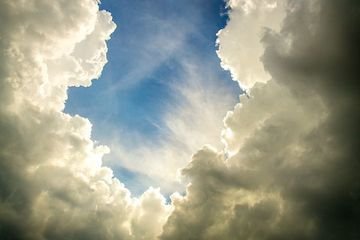
Various Mahayana texts discuss the stages of the path in varying detail and order. For this article, I’ve mainly followed the stages of the Path as explained in the Dasa Bhumika Sutra. Dasa bhumika in Sanskrit means ten stages. Prior to these ten stages, and similar to how the Theravada Eight-fold Path had the gotrabhu (becoming of the lineage), some texts define two preliminary stages that were explained in Part 1 of this series.

In this article, I’ll be giving a brief overview of the 10 Stages of the Mahayana Bodhisattva Path.
Stage 1. The stage of Great Delight (pramudita bhumi)
The first stage is called Great Delight, because the Bodhisattva realizes and becomes aware of one’s attainment of perfecting their work in charity (dana paramita). This is one of the six perfections that is often referred to in Mahayana Buddhism. The Bodhisattva realizes the emptiness of the individual self (pudgala nairatmya) as well as the emptiness of all ordinary entities and objects (dharma nairatmya).
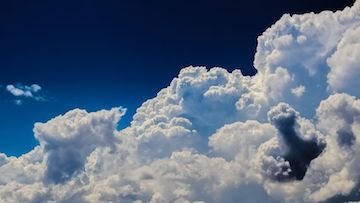
Stage 2. The Spotless Unstained stage (vimala bhumi)
The second stage is called Spotless and Unstained, because the Bodhisattva realizes that he has become free from unwholesome and bad actions. The Bodhisattva has perfected the Mahayana moral precepts (sila paramita) and attained the bases of the ten virtuous and skillful actions (kusala mula). Their thoughts are free from any taints or defilements. The Bodhisattva practices absorption meditation (dhyana) and mind concentration (samadhi).
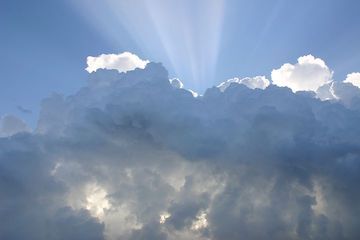
Stage 3. The stage of Illumination (Prabhakari bhumi)
The third stage is called Illumination, because the Bodhisattva’s lucid perfection of patience and tolerance (ksanti paramita) where rage and anger have subsided. The Bodhisattva has completed the four meditative absorptions (dhyana) and the four immeasurable qualities (apramana) [loving kindness, sympathetic joy, compassion, equanimity] and attained the five supernormal knowledges (abhijna). The Bodhisattva is now free from lust (raga), anger (dvesa) and delusion (moha).
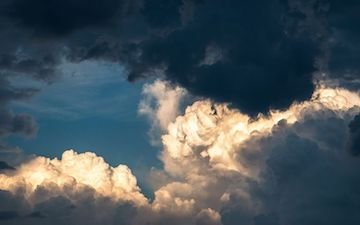
Stage 4. The stage of Radiance (arcismati bhumi)
The fourth stage is called Radiance, but can also be described as Fiery Brilliance and Glowing Brightness due to the Bodhisattva’s perfection in energy (virya paramita). The Bodhisattva trains in acquiring virtues and practices defined as the 37 aids to enlightenment (bodhipaksiyadharma).
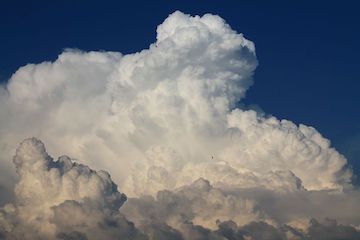
Stage 5. The stage that is Hard to Surpass (sudurjaya bhumi)
The fifth stage is considered Hard to Surpass, because of the Bodhisattva’s requirement to practice the difficulties and intricacies of deep meditation (dhyana) and mind concentration (samadhi). The development of Buddhist wisdom (prajna) is transformative for the Bodhisattva, as well as realizing the four noble truths (aryasatya) in both the conventional (samvrti) and ultimate sense (paramartha).
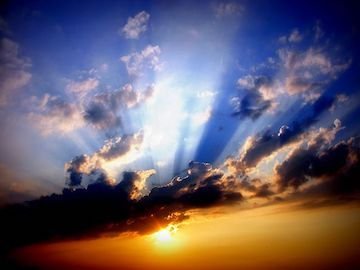
Stage 6. At the Doorstep of Enlightenment stage (abhimukhi bhumi)
The sixth stage is at the Doorstep of Enlightement, because the Bodhisattva is so close! The Bodhisattva understands the nature of dependent origination for all ordinary entities and objects (pratitya samutpanna). The Bodhisattva’s mind is now filled with the perfection of wisdom (prajna paramita) in conjunction with the realization of emptiness (sunyata).

Stage 7. The Going Far stage (duramgama bhumi)
The seventh stage is considered Going Far, as the Bodhisattva works on developing many aspects on the path: attainment of great compassion (karuna) for all sentient beings, full understanding of the five aggregates of the body and mind (skandha), great development of the aspiration for Enlightenment (bodhicitta), excellence in the perfection of energy, and the ability to convince non-Mahayana followers to switch to the Mahayana path through skillful and expedient means (upaya-kausalya paramita) and lead them onwards to Enlightenment.
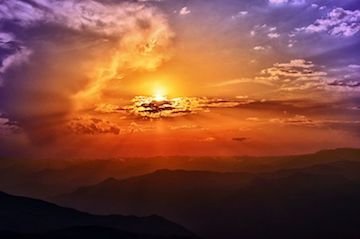
Stage 8. The Steadfast Immovable stage (acala bhumi)
The eighth stage is called Steadfast and Immovable, as the Bodhisattva has gotten this far and has become aware of the definitive quality of their development on the Mahayana Path. This is a no-turning-back-now moment, where the Bodhisattva realizes and sees in a vision when and where Buddhahood will be attained in the near future.

Stage 9. The Proficient Thoughts stage (sadhumati bhumi)
The ninth stage is Proficient, because the Bodhisattva attains the perfection of the ten powers (bala paramita) of a Buddha, and the realization of possessing the perfection of wisdom (prajna paramita). This is also the stage the Boddhisattva prepares for leading all sentient beings to Enlightenment.

Stage 10. The ‘Highest’ Doctrine stage (dharma megha bhumi)
The tenth and final stage is called the ‘Highest’ Doctrine, because the highest of perfection by the Bodhisattva is attained in the perfection of knowledge (jnana paramita). The literal translation of megha could be considered ‘up in the cloud’. The Bodhisattva now has the qualities of a full-fledged Buddha. Having mastered the entire path, they are now considered and recognized by all prior Buddhas. They have now completed the absorption and embodiment of the eternal doctrine (dharmakaya) in full.
In the next article, I’ll be discussing The First Stage of the Mahayana Bodhisattva Path in full detail.

I will flag comment spam at 1% strength. If you keep on spamming my post, I will flag you at 100%. I don't care if you have limited English abilities, write a couple of sentences about this article, no copy-paste, please. I will flag: one sentence comments, links to your blog and begging for up-votes and follows. Also, I will flag comments that have nothing to do with my blog's article. I will also check your comment section to see if you have been comment spamming on other blogs.


 A link to My Blog
A link to My Blog
This is deep meditation 🧘♂️. You’ve really exposed me to Buddism and some practices. Everyday I gain new knowledge applicable to life and all these are contributed to by your timeless research and your time taken to put them together and share with us. This is some deep knowledge I didmt learn in school . Smiles
The bhumis can be an ideal one strives for, they have inspired me as well @olumideolowoyeye. Mindfulness practice has become trendy, however it does not expose the student to the goal of Buddhism, which is to become enlightened...trendy meditation is aimed at worldly goals, to feel peaceful and happy, which are not lasting qualities. I hope my articles introduce people to the reason why Gautama Buddha decided to teach the timeless Dhamma.
Yeah it is my friend. Again this is a wonderful exposure for me .
@reddust, I missed your last article coz electricity power down for 15 hours flood situation. But now ok and I'll hope to read that. This time you better explained Path no two of Mahayana Bodhisattva Path. That introduced book order by order. The main buddhist objective is find to Nirvana path. I already did Bodhisattva meditation it gives lot of feel free and probably I was felt I went final destination of Nirvana across long dream.
Steemit was down off and on during the morning I posted the first of this series here in Tulsa, i understand, the net can be unreliable @madushanka. Depending on one's goals and the vehicle they follow, Theravada goes for the arahant, Mahayana the Bodhisattva ideal through the practice of many lifetimes, and Vajrayana the goal of Buddhahood in one lifetime.
For me I am still working on letting go of my bad temper...hahaha, I haven't reached the first Bhumi yet but I have found my anger is just a whisper of itself when I started practice over 20 years ago. Having been molested by my step-father and neglected as a child I had a lot of rage. Buddhist practice has given me understanding and compassion for those who hurt me as a child and compassion for my own pain...Nibbana/nirvana hasn't been my goal, but I keep it close to me as an ideal to aim for as I do my daily practices and duties. <3
Thanks for sharing these ten aspects in really deep essence. And yes, all these ten stages help our life thoughts to attain the path of enlightenment. And in my opinion these stages are not easy to surpass because for that we have to firstly understand that, our physical life is materialistic and to attain the stage of enlightenment we need the path of spirituality. Thanks for sharing and wishing you an great day. Stay blessed. 🙂
When I read the bhumis in the Prajnaparamita I was humbled, it's hard to be delusional after a great meditation retreat when one thinks they are a Buddha because of the bliss and lights one sees during samadhi...
There is no way one can say they are a Buddha if they have not gone through the Bhumi stages...hahaha
Yes, that's really true. 🙂
I salute you @deddust, you are a christian but able to explain in detail the teachings of budha, I am just a muslim unable to comprehend all the Sufi stages, even I myself practice Sufi teachings ,, I believe if you study my Sufi can be smart from me, a honor to know you @reddust
I am not a Christian, I try not to label myself because I am not a label, you could call me a Buddhist, and I wouldn't argue with you @steemitnatural. I will stay with the study of Buddhism, as my teachers told me pick one practice and stick with it and become proficient, I have chosen the teachings of Gautama Buddha.
Buddhist teachings that you describe are much in common with the teachings of tazkiah in Sufi science, I really like to read them.
All the religions I have read about or have talked with practitioners and students have the virtues within their core practices and I think we all can find common ground because we all strive to be virtuous humans.
I really agree with you my best friend
when one has reached the tenth stage (dharma megha bhumi) is there still a higher stage than this?
and what is the ultimate goal of all these accomplishments? Thanks for the explanation..
These are stages of attaining Buddhahood, in the Dasa Bhumika sutra the 10 tenth stage is the final stage. There are multiple sutras explaining the stages and they explain the Bhumis is different ways.
means only a few are able to reach up to level 10? extraordinary, Sufis too, the highest attainment of them is maqam tajalli
Yes only a few can attain Buddhahood, but the Buddhist text speak of past Buddha's, which are many...they discover the ancient Path and share what they have found with others. Once a Buddha's teachings die and are forgotten there will be another Buddha that discovers the ancient Path to enlightenment. It is a cycle....
@reddust,
My dear friend, better you try to learn "Therawada Buddhism"!
My first Dharma teacher is Mahayana and I took my Bodhisattva vow before I went on my first meditation retreat with my Theravada meditation teacher SN Goenka. I studied both vehicles...one is not better than the other, they compliment each other in my opinion.
@reddust,
My dear friend, I don't know in deep, but these two teachings has a lot of differences! I heard Therawada is a pure Buddhism and Sri Lanka is one of the country which has this pure Buddhism!
This is what I heard and never compared these two teachings before.
Cheers~
Theravada and Mahayana are different, I didn't say they weren't, I did say they compliment each other...
One is not better than the other....I have met saintly people in all three Buddhist traditions and I have met a lot of ignorance and hatred regarding whose school is the best...I have had to argue the points in Buddhist schools differences ad infinitum when I worked as a moderator on a Buddhist social site called e-sangha. I won't argue the points anymore because I still am working on the basics, like letting go of my negative conditioning, which all schools address through hundreds of teachings in sutas and sutras and meditation techniques, all are the same but delivered differently depending on the group or individuals conditioning...hehehe <3
I've had to argue scholars with Ph.D's in the field of Buddhist scholarship...oh the headaches the well educated have given me...hahahah
https://en.wikipedia.org/wiki/Early_Buddhism
Wow
It takes a lot of understanding and insight to put this together.
But does this write up describe a God, a style of worship or a religion? I think I am confused about that and I will be happy to receive an explanation because I really want to know more about it.
You have a shout-out on my Saturday relationship show, you can view the message on my blog whenever you are opportuned to do so.
There is no worship of Gods or deities in Buddhism. The images you see are related to faith and many images deal with visualization practices to integrate meditation insight and practices. Buddhism doesn't negate God or Gods. What Buddhism teaches is a God or Gods, deity, what have you, cannot save you from your conditioning. You must put in the effort to free yourself from old habits and conditioning that blinds you from seeing reality as it is...God cannot save you from self destructive habits.
Buddhism does negate creator Gods, it is our own actions that create (the law of nature, cause and effect, karma) who we are.... However, the text I've read that heavenly beings like, devas, Gods and such, create karma even though their conditioning may be very good, giving them birth into the higher heavenly realms. They will accrue karma through their long life and eventually pass and the heavenly beings will be reborn into the lower realms like ours, which is called the desire realm...or the lower realms like the animal realm or the hell realms...Gods that are jealous, vengeful, speak of killing those who do not believe in them will probably be born as worms or hungry ghosts.
https://www.buddhanet.net/e-learning/qanda03.htm
Oh, I think I understand better. Thanks for taking out to time to explain, I will like to know more as time goes by.
Do not forget to check out the shout-out you have from a steemian on my blog.
The best summery review of 10 paths of some of Buddhism lessons. (Mahayana Bodhisattva) Your buddhism letters given learn more thing to us. I see lot of foreigners move to buddhism because there hasn't any hassles to us. Buddhism has better final objective. Thanks to your support @reddust.
There are a lot of Westerners learning what Buddha taught. As Buddhism migrates from society to society, it takes on the traditions, arts, and rituals of that society. I hope I can see what form the Dharma will take in Western culture! Thank you for your support @kingsberry.
Each stage could easily have it's own commentary / post and all seem to work together for the perfect end. Thanks @reddust.
@enjoywithtroy, the following articles will break down each stage. They all work together seamlessly and I found the text interesting when comparing it with the modern meditation mindfulness movement which has taken the meditation practice and left out most of the teachings.
Thank your great article @reddust. Mahayana buddhism have some different with Theravada buddhism. But Both have same summaries.You are correct. Mahayana Bodhisattva ten path slimier to Theravada Noble Eight-fold path.Other thing is Lot of additions have in Mahayana Buddhism.
I think Mahayana is lay-people oriented because of the Bodhisattva vow, which states anyone no matter a monk, nun, or lay person if they practices diligently can become a Buddha.